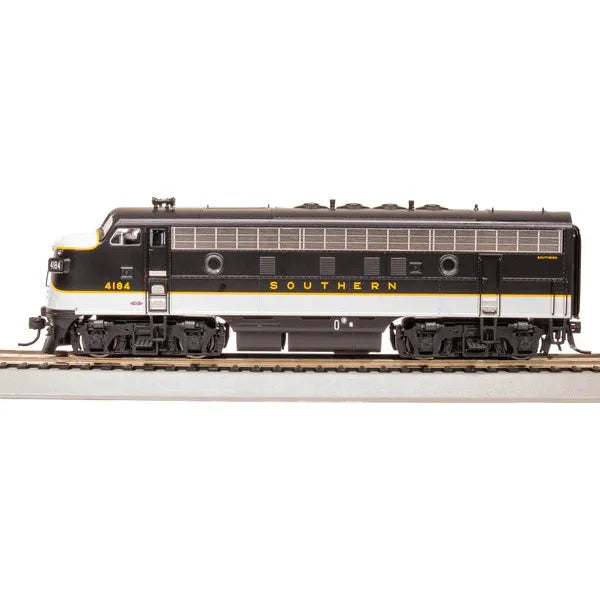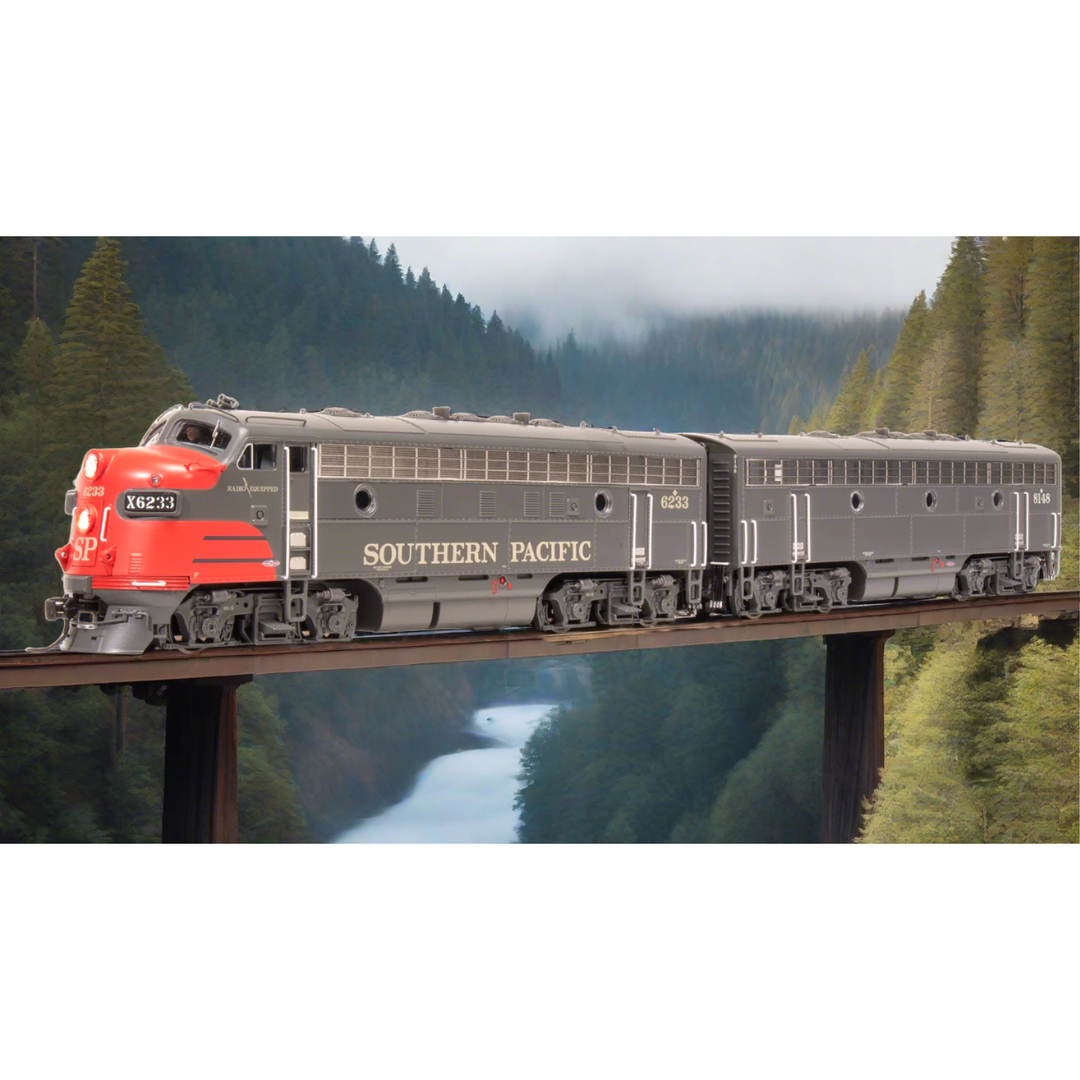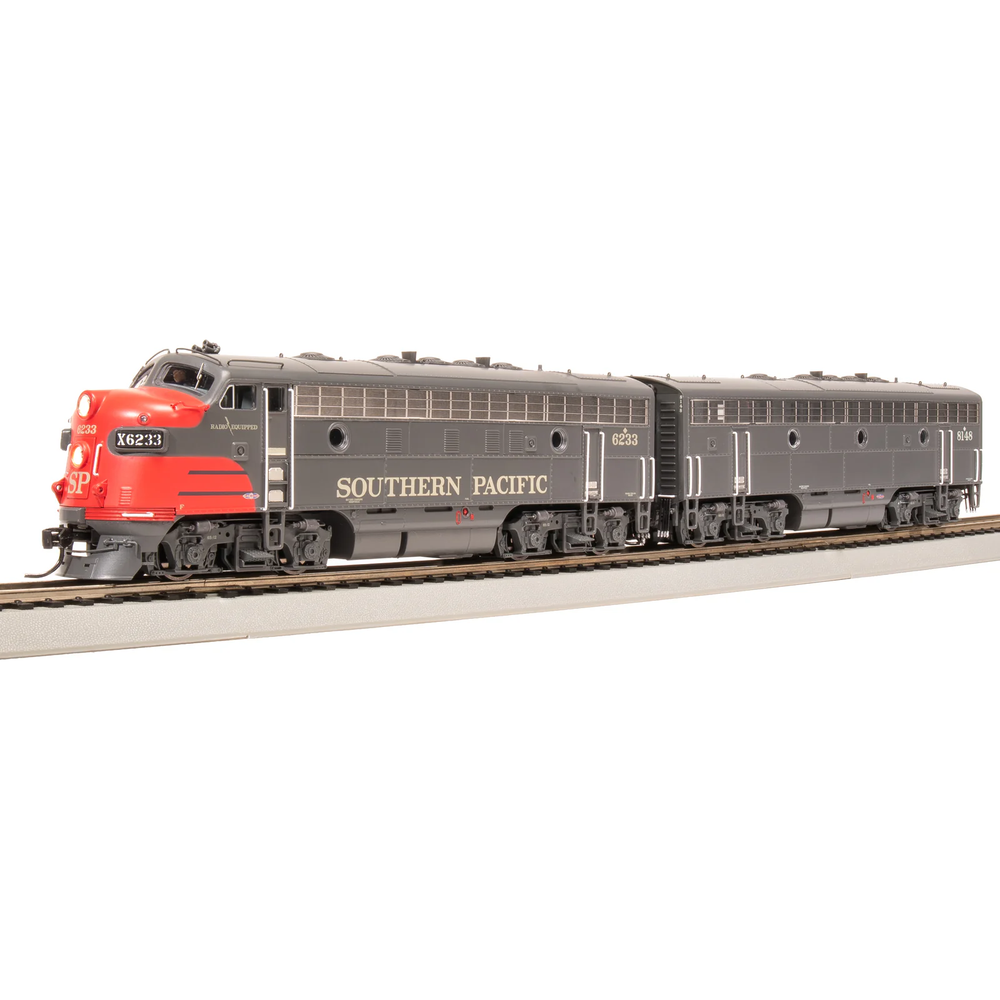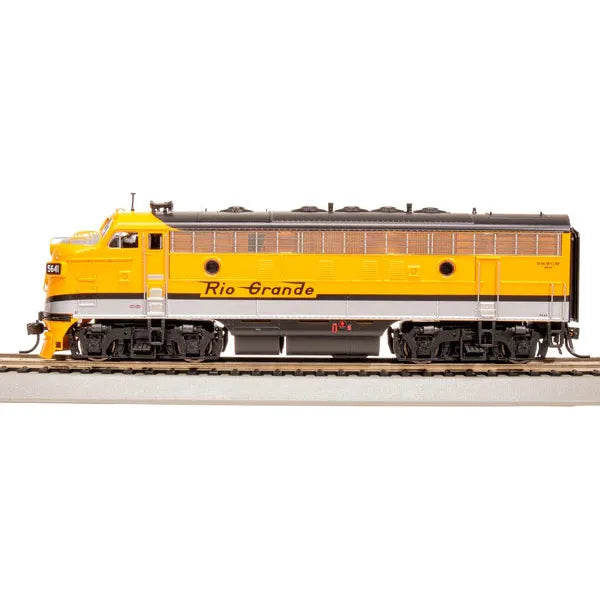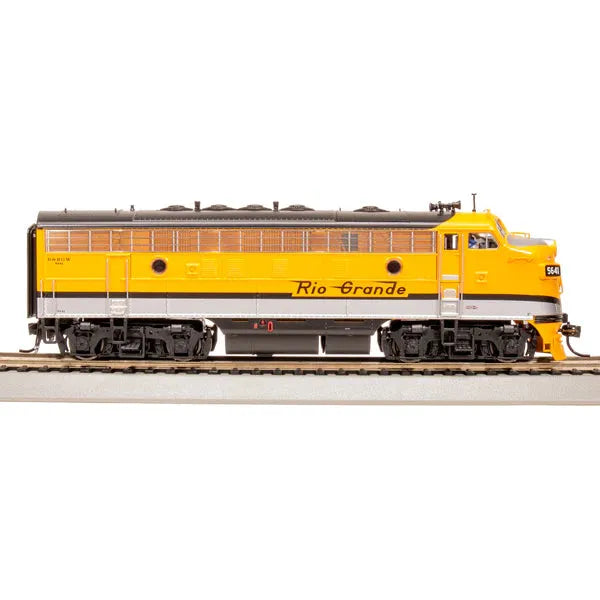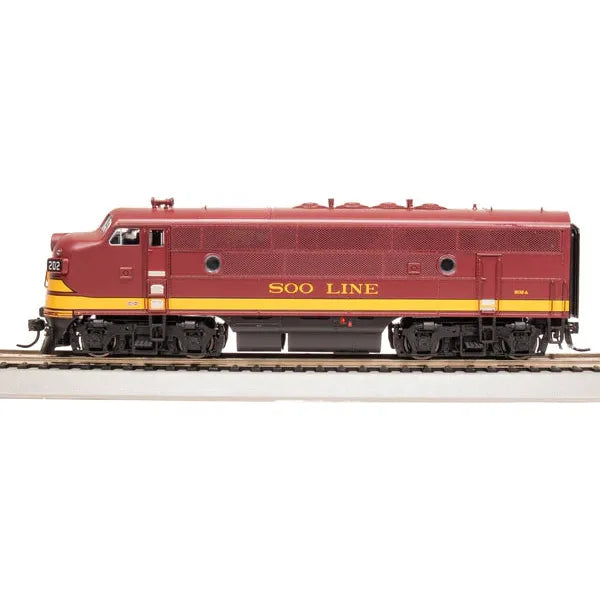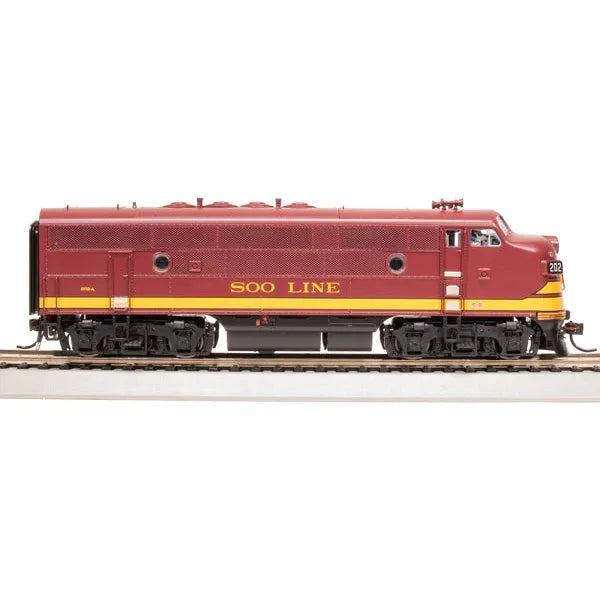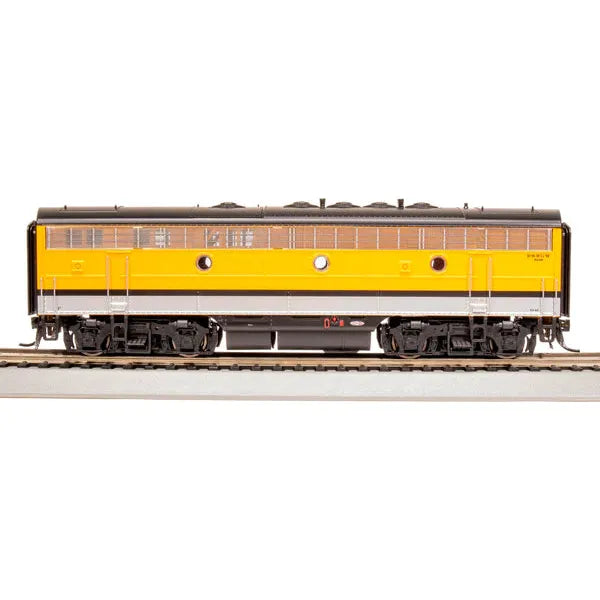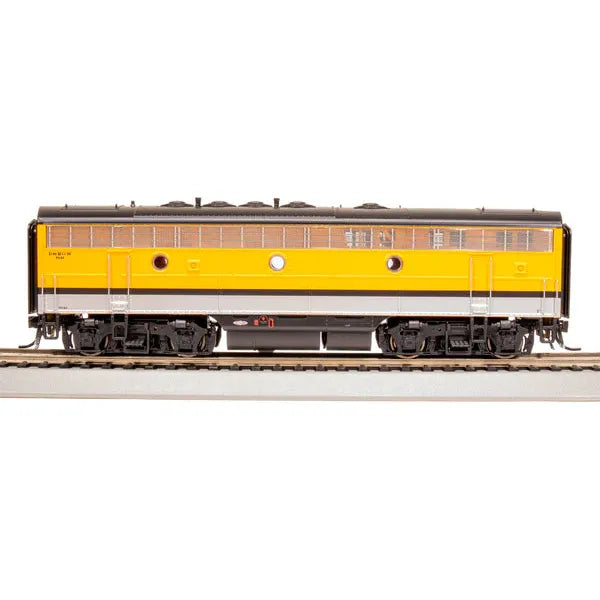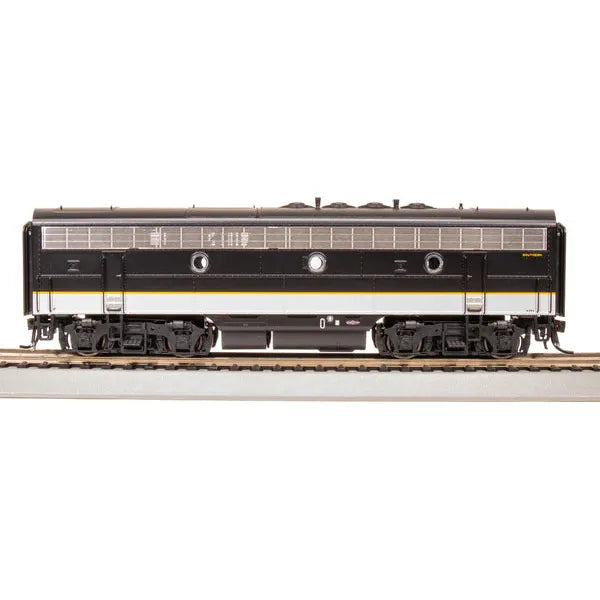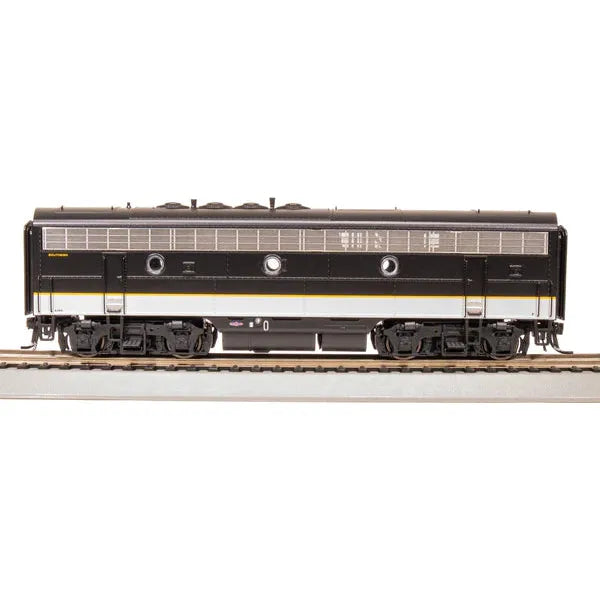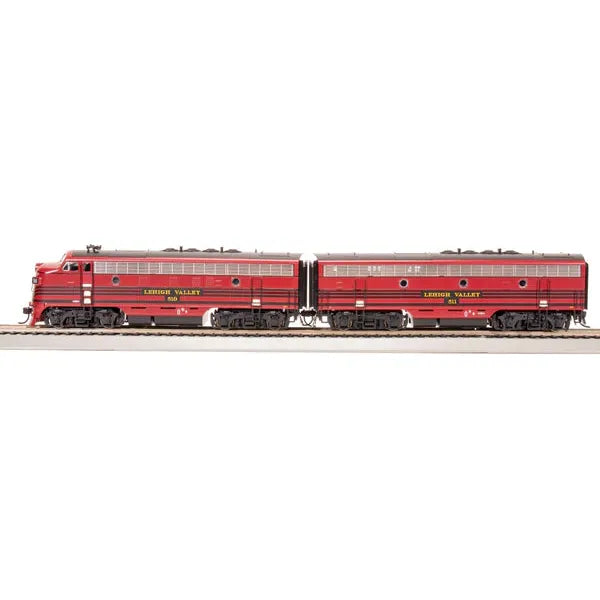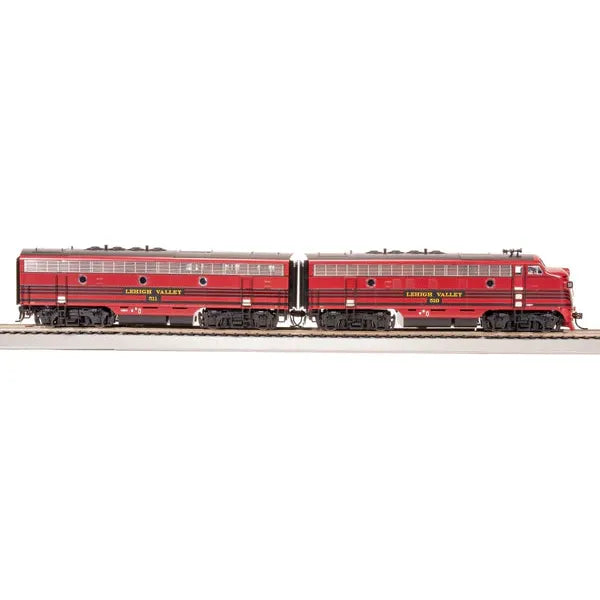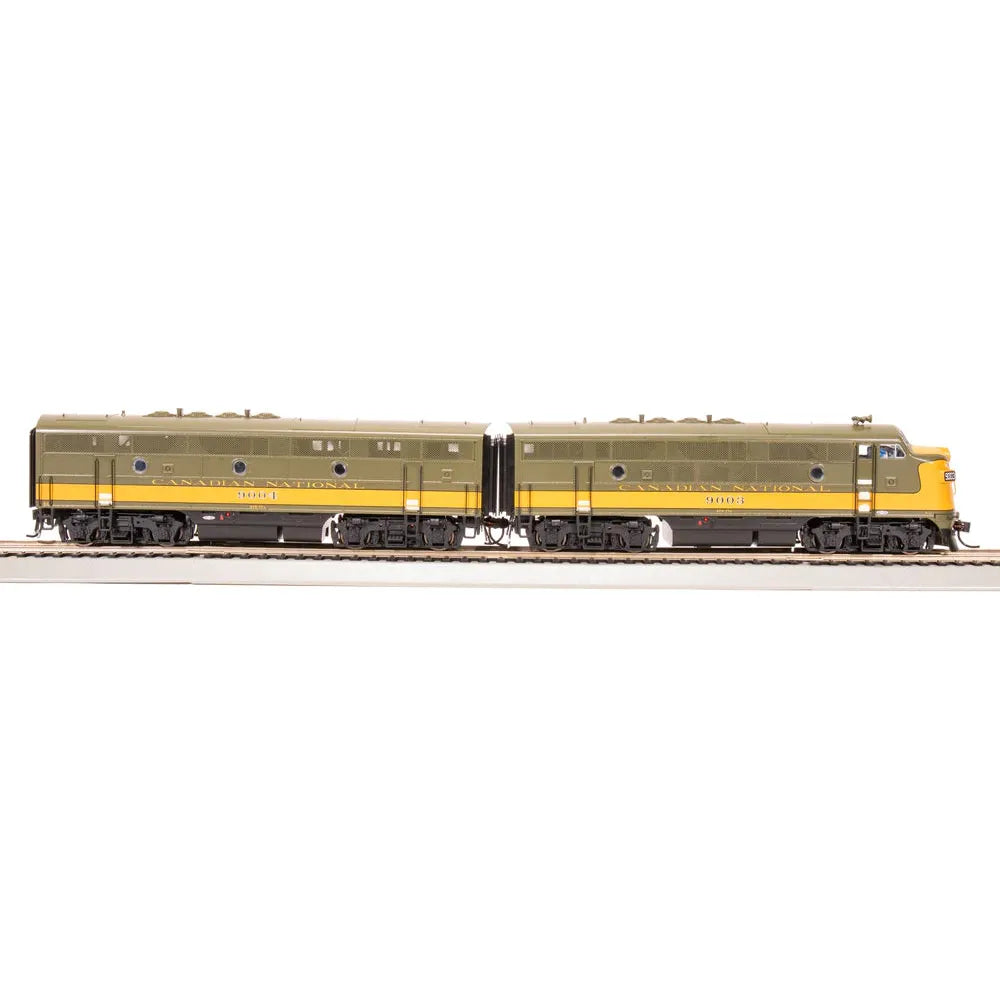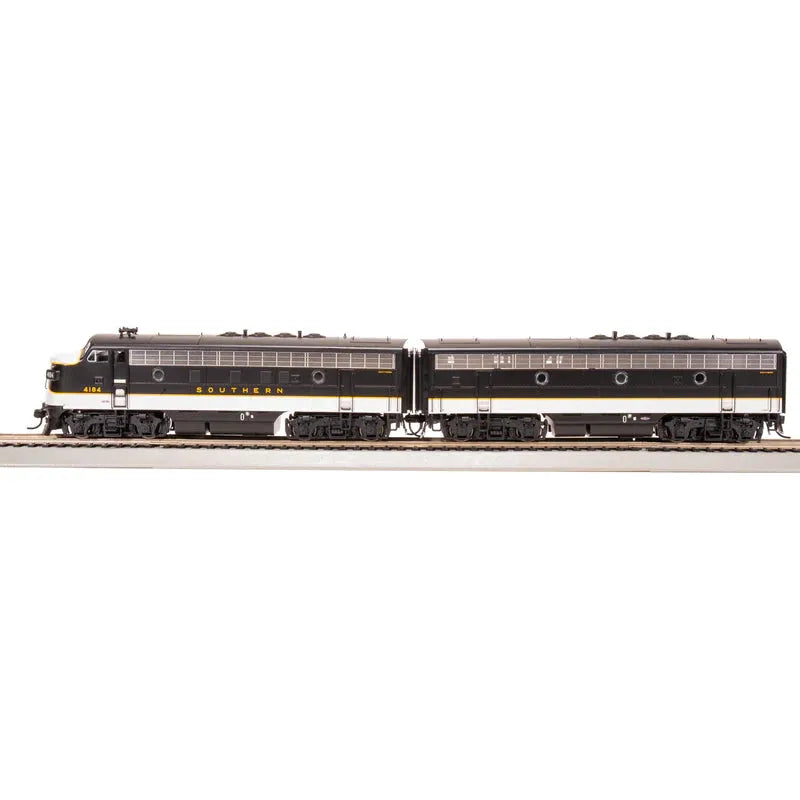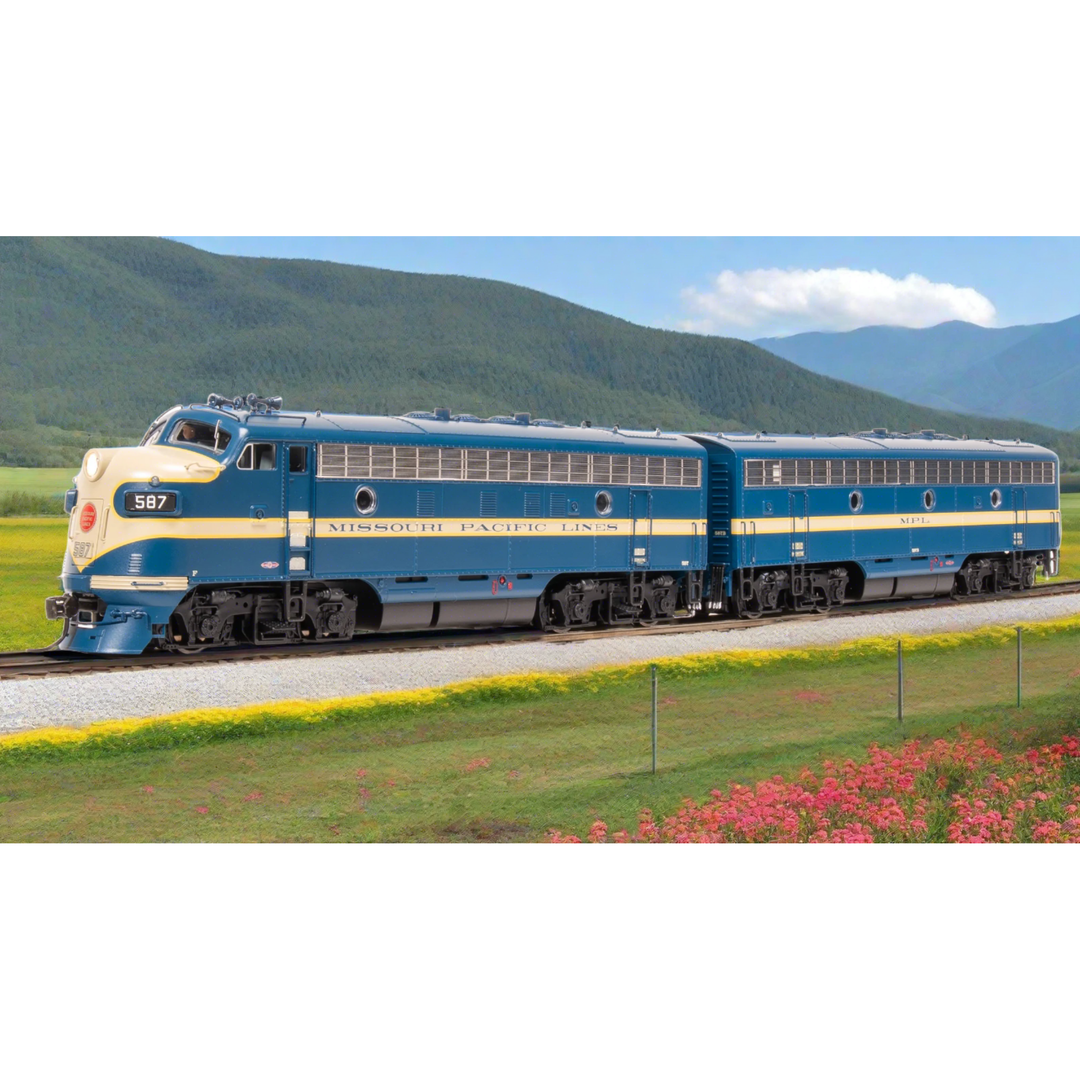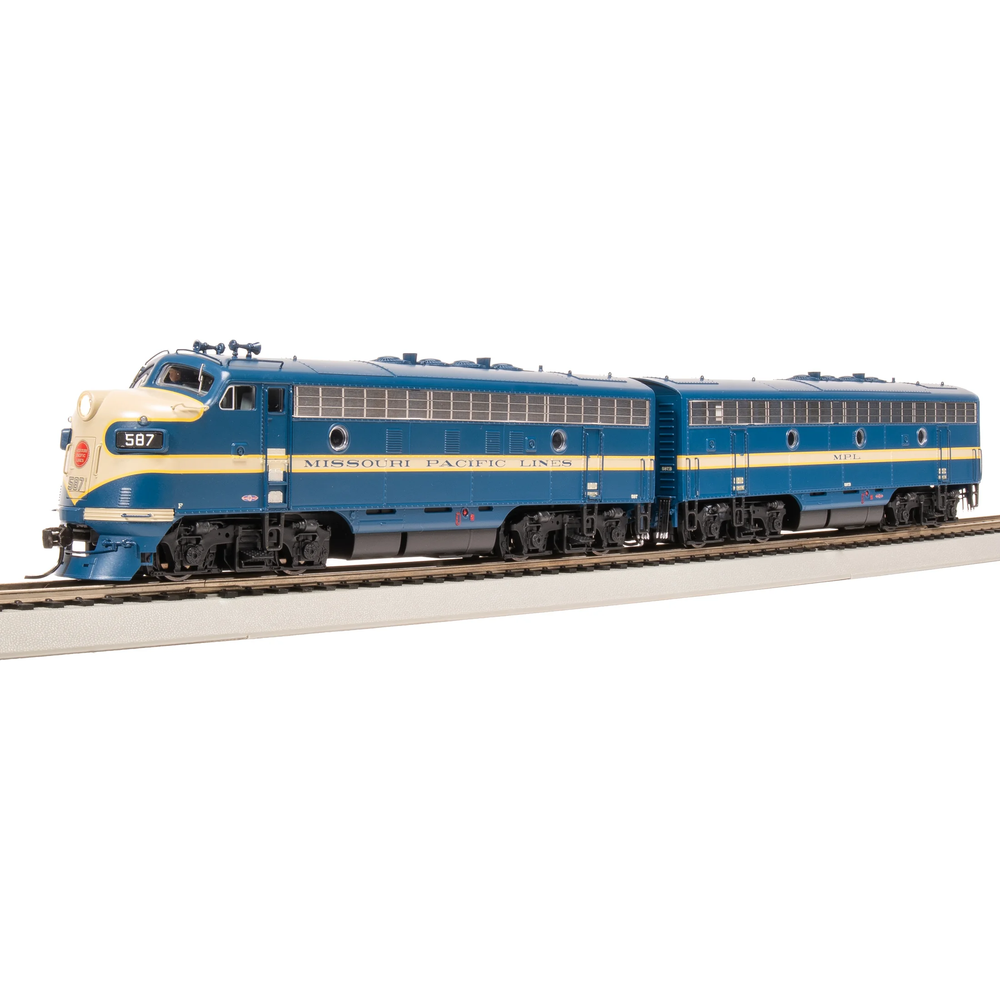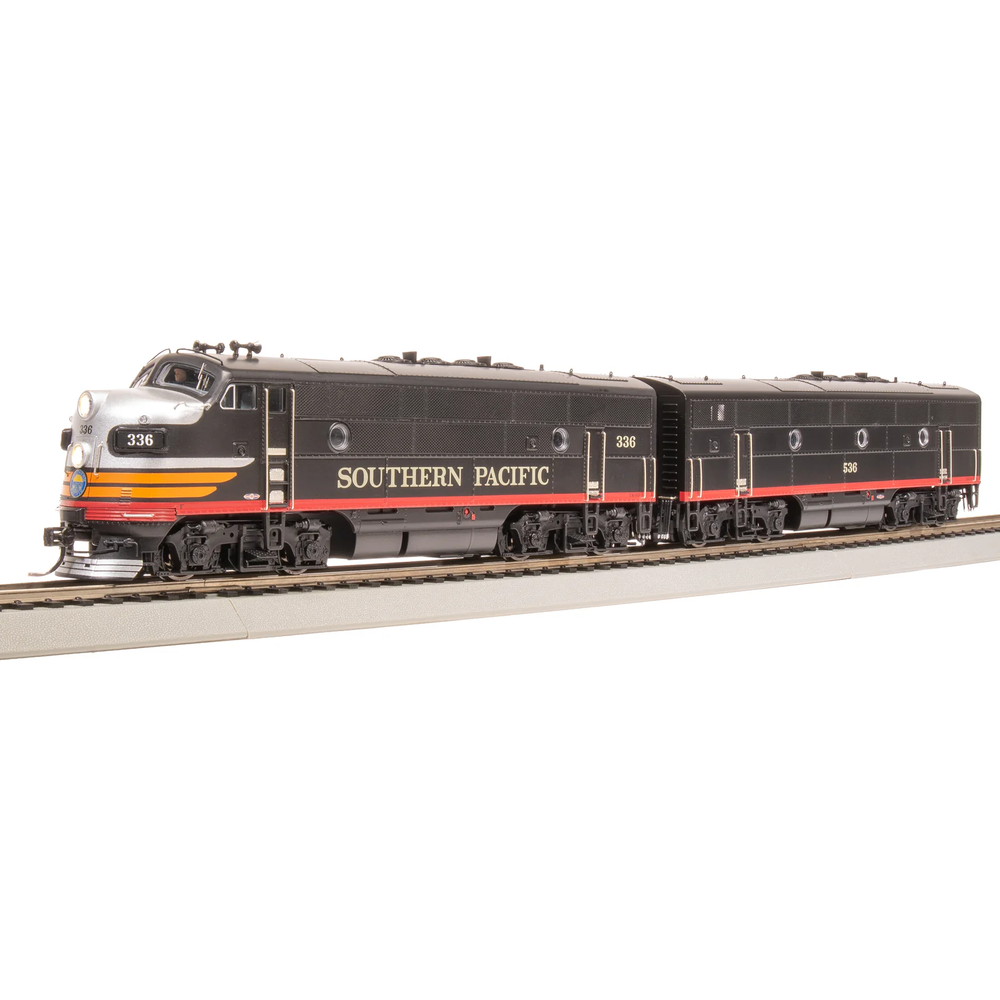Broadway Limited Imports HO Scale EMD F3 & F7 Units
The EMD F3 and EMD F7 are both iconic diesel-electric locomotives produced by General Motors' Electro-Motive Division (EMD) in the late 1940s and early 1950s.
EMD F3
-
Production: July 1945 – February 1949
-
Units Produced: 1,106 A units, 694 B units
-
Power: 1,500 horsepower (1.1 MW)
-
Speed: Up to 102 mph (164 km/h)
-
Engine: EMD 16-567B 2-stroke V16 diesel
-
Usage: Primarily for both freight and passenger service
EMD F7
-
Production: February 1949 – December 1953
-
Units Produced: 2,393 A units, 1,463 B units
-
Power: 1,500 horsepower (1.1 MW)
-
Speed: Up to 102 mph (164 km/h)
-
Engine: EMD 16-567B 2-stroke V16 diesel
-
Usage: Primarily for both freight and passenger service, but also used in high-speed flagship trains like the Santa Fe Railway's Super Chief
The F3 was the third model in GM-EMD's F-unit series, while the F7 was the fourth and most successful model, with more units produced than all other F-units combined. Both models featured the classic "bulldog nose" design and were known for their reliability and performance
Visual Differences
EMD F3
-
Grilles and Louvers:
-
The F3 has multiple small horizontal grilles on the sides of the locomotive body above the porthole windows. These grilles are distinctive and less streamlined than those on the F7.
-
-
Porthole Windows:
-
The F3 typically has three porthole windows on each side.
-
-
Roof Details:
-
The F3's roof often features several rooftop cooling fans, which are not as streamlined or recessed as on the F7.
-
EMD F7
-
Grilles and Louvers:
-
The F7 has fewer, more simplified grilles on the sides of the locomotive, and they are more streamlined compared to the F3. Some F7 models also have "chicken wire" grilles, giving them a different texture.
-
-
Porthole Windows:
-
The F7 generally has two porthole windows on each side. This reduction in windows is one of the most noticeable differences.
-
-
Roof Details:
-
The F7's roof cooling fans are more recessed and integrated into the body design, giving the locomotive a cleaner, more modern look.
-
By focusing on these visual differences, you can more easily distinguish between the EMD F3 and F7. Both models share the iconic "bulldog nose" design, but the grilles, porthole windows, and roof details are key factors that set them apart.


